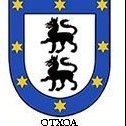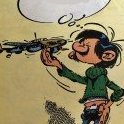-
Posts
260 -
Joined
-
Last visited
Profile Information
-
Gender
Male
-
Location
Vancouver, WA USA
-
Interests
Military history, scale modeling and fly fishing
Recent Profile Visitors
Sergeant's Achievements

Obsessed Member (4/9)
720
Reputation
-
Good evening, Jack. When I joined the Battalion, they already had M109’s. I simply requisitioned what was needed for touch up. The paint we were issued never exactly matched the original; however, with all the dirt and mud no one even noticed. Vietnam era M109 Self-propelled Howitzer in battlefield conditions.
-
@thebig-bear I must have read Jim Gilmore’s comments at some point because it seems familiar to me. I believe Lustreless Olive Drab is a generic description used in military manuals and specifications. OD no.9 is a specific colour of Olive Drab. In other reading, perhaps from Mike Starmer it was pointed out that military vehicles in World War 2 were not often washed. The perception I had is crews did not have time, energy or access to clean the outside until it became near impossible to identify what unit they were in. My point is dirt in the form of dust will change the visual appearance of paint and most of the photographs we have of tanks from World War 2 are on patrol or in battlefield conditions which makes them more likely to be covered in dust. likewise repainting was only done as time and material would allow. Normally the driving factor was repair and maintenance. It was a priority to have equipment working, whether the paint matched or not. Repainting was a low priority as was fenders and other nonessential bits on a tank. I was a Battalion Sergeant (MOS 05F40) in an M109 Self-propelled Howitzer Field Artillery Unit and we had to maintain our equipment daily to ensure it was battle ready. Cleaning was a lower priority unless there was blood or other human body fluids.
-
@thebig-bear "Having made a study on the subject of OD, you sound like a man we might need! When you say you’ve spoken to Mike on this subject, are you referring to OD, or to the thread?" I corresponded with Mike by email from 31 October 2020 to 02 February 2021 regarding OD paint and purchased all his books that cover different World War 2 theatres of operation. There is a book for BEF, Britain and Europe, another for the 1940 – 1941 Caunter pattern in Egypt and Greece. Then another for the Alamein period, 1942 – 1943 with the patterns and colours, and a book for Sicily and Italy with different patterns and colours for the period 1943 – 1945. His books include official orders, disruptive diagrams and painted colour patches that closely match contemporary standards. "My questions to you are then as follows; regarding fading, in a NWE environment, how quickly do you think we are talking about at its quickest, in a worst possible batch example? If it took something like several years, then it’s out of the scope of our Shermans, but if mere months, then it’s very pertinent." Regarding fading in the NWE environment. Based on what I have read fading was not an issue because of the climate. Fading would be noticeable within a few months when Shermans were used in southern Europe (Sicily, Italy, and France) and also in North Africa. My ship stopped in Tunisia, North Africa and it is an arid dry land. "Secondly, how wide could some of that variation be? Have you seen any examples as obviously different as that in those photos from Kingsman, but taken during the course of WW2? And if so, please could you tell us where?!" Regarding variation in Olive Drab paint. I have looked at hundreds of World War 2 photographs and watched dozens of films and videos. The variation I saw is from dark green (almost black) to light brown. I also observed first-hand wide variations in the Vietnam War. This is what led me to decide the best we can do as modelers is to match as close as possible the color we are trying to represent and accept the fact that OD paint was never intended to be a perfect colour match from one vehicle to another in the field of operations.
-
Hello Jack, I see you’ve been very active this past year and advanced to ‘Very Obsessed Member (5/9)‘. Well done my friend.
-
Hello @thebig-bear I am a friend of @JackG and have been reading your interesting conversation about Sherman tank colour. I was in both the US Navy and the US Army from 1963 to 1975 during the Vietnam War. When I met Jack online a few years ago we were talking about matching Olive Drab and since then I have made a study of the subject. In one of your earlier posts, you mentioned Mike Starmer and I too have corresponded with him about this subject. In addition to all the things you, Jack and @Kingsman have pointed out there are at least two more important factors to consider regarding the colour you see in films and photographs. The first is source of supply. During World War Two it was hard to get enough paint from one manufacture, so several suppliers were given paint chip (samples) to match. This resulted in several shades of OD paint and the quality was not always the same. Some OD paint would quickly fade in certain fields of operation. Then there is the issue of cleaning. Water was often in short supply, so, crews would use contaminated water from ditches, diesel oil, or whatever was available to wash the dust and mud off their tank. In Vietnam it was common practice to use diesel oil which makes the paint darker. In the end I decided the exact colour of Sherman tanks used in the war was less important than the identification marking on the paint.
-

Avro Manchester Instrument Panel 1:1
Sergeant replied to alzictorini's topic in Ready for Inspection - Aircraft
You are truly a Master Craftsman. Harold -

Avro Manchester Instrument Panel 1:1
Sergeant replied to alzictorini's topic in Ready for Inspection - Aircraft
I’ve truly enjoyed following you through this great project. Harold -

Avro Manchester Bomber Instrument Panel 1:1
Sergeant replied to alzictorini's topic in Work in Progress - Aircraft
Welcome back my friend, it's good to see you again. Looking forward to watching you put this project all together. I stopped working on my Lancaster model for a while to take care of some things around the house. Then I became owner of a 4-month-old Australian Labradoodle puppy who demands a lot of attention, and I don't dare let him into my modeling studio. He is like a child; he wants to put everything in his mouth. Harold -

Avro Manchester Bomber Instrument Panel 1:1
Sergeant replied to alzictorini's topic in Work in Progress - Aircraft
Carl, I have learned things on this Forum about my family I probably would have never known. Harold -

Avro Manchester Bomber Instrument Panel 1:1
Sergeant replied to alzictorini's topic in Work in Progress - Aircraft
Thank you, David. My wife and I spent some time this evening looking at Harold's documents on Ancestry.ca and found several were things we had never seen before like the Census records, a picture of my mother when she was in her 20's and information about my grandparents and great grandparents. We learned that Harold was living at the Y.M.C.A. in Windsor, Ontario when he enlisted and had been in the 128th Field Artillery of the Missouri Army National Guard for five years before in joined the RCAF. Harold -

Avro Manchester Bomber Instrument Panel 1:1
Sergeant replied to alzictorini's topic in Work in Progress - Aircraft
Thank you, Pete. I never met my uncle because he died before I was born. However, based on what his mother (my grandmother) told me Harold probably would have wanted to be a pilot no matter the risk. He was a dairy farmers son from the State of Missouri and all he wanted to do in life was to be a pilot. When Pearl Harbor was bombed on 7 December 1941, she said Harold wanted to join the U.S. Army Air Force, but the Army did not have openings for pilots until later in the war. So Harold went to Canada and joined the RCAF. Based on his enlistment in March 1942 Britain and the RAF had been in the war 2-years and 6-months. I could not find yearly loss information but based on an excerpt below I believe Britain needed pilots and that gave Harold an opportunity to fulfill his dream. A total of 57,205 members of RAF Bomber Command or airmen flying on attachment to RAF Bomber Command were killed or posted missing in World War II.[2] It was not unusual for the heavy bombers to complete their operational sortie and return home with members of their crew dead or dying aboard the aircraft,[210] or with the rear-gun turret blown off.[211] Harold -

Avro Manchester Bomber Instrument Panel 1:1
Sergeant replied to alzictorini's topic in Work in Progress - Aircraft
-

Avro Manchester Bomber Instrument Panel 1:1
Sergeant replied to alzictorini's topic in Work in Progress - Aircraft
Carl, is an instrument fitter also an aircraftsman, or are they different trades? Harold -

Avro Manchester Bomber Instrument Panel 1:1
Sergeant replied to alzictorini's topic in Work in Progress - Aircraft
Nice work Carl. I like the green tinted lens. Who is responsible for making sure the clock is wound and synchronized with the pilot and navigators watches? Harold -

Avro Manchester Bomber Instrument Panel 1:1
Sergeant replied to alzictorini's topic in Work in Progress - Aircraft
That makes sense to me... I wish this beautiful piece was in my home. Harold









